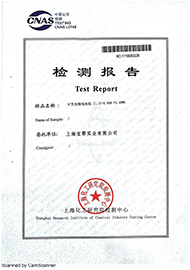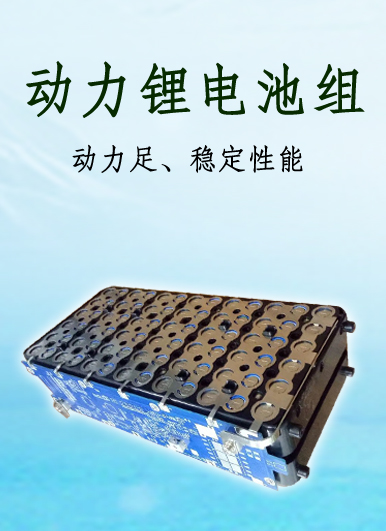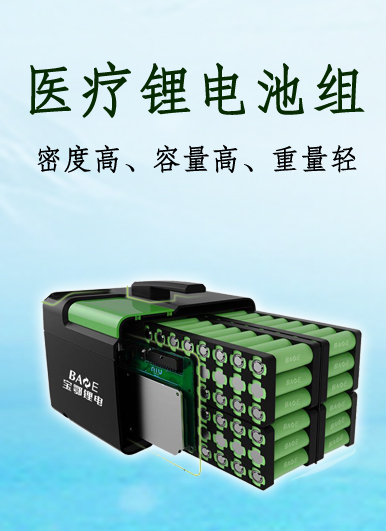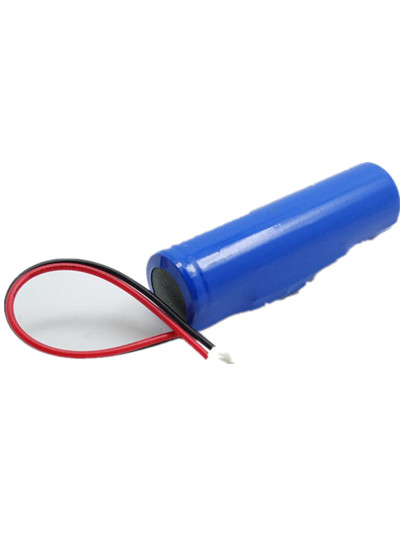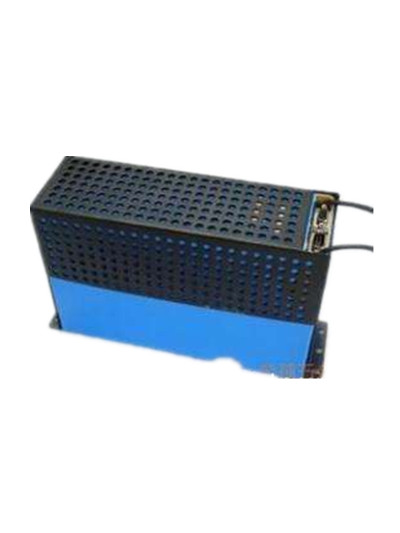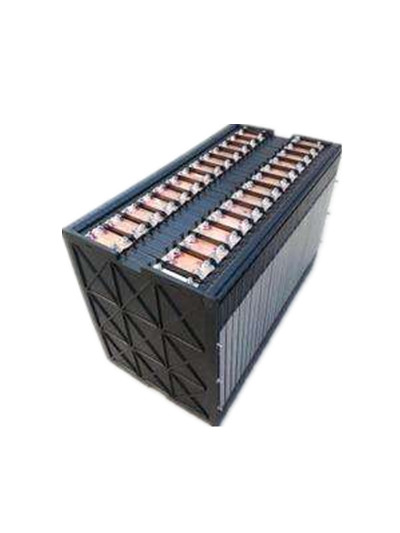In electric vehicles, the cooling system is mainly divided into two parts: one is to cool the driving motor, vehicle controller and DC/DC components of the power system, the other is to cool the power battery and charger of the power supply system. This paper discusses the cooling system of power battery.
At present, the power battery of electric vehicle is lithium-ion battery. The performance of lithium-ion power battery is sensitive to temperature change. The loading space of the vehicle is limited. The number of batteries needed by the vehicle is large, and the batteries are tightly arranged and connected. When the vehicle runs at different driving conditions, such as high speed, low speed, acceleration and deceleration, the battery discharges at different rates, and generates a lot of heat at different heating rates. In addition, time accumulation and spatial effects will produce uneven heat accumulation, which will lead to complex and changeable operating environment temperature of the battery pack.
The cooling performance of power batteries directly affects the efficiency of batteries, as well as the service life and safety of batteries. Because of the heat generated by the battery itself during charging and discharging process, the temperature will rise, and the temperature will affect many characteristics of the battery parameters, such as internal resistance, voltage, SOC, available capacity, charging and discharging efficiency and battery life.
In order to give full play to the best performance and life of battery pack, it is necessary to optimize the structure of battery pack, heat management of battery pack, increase heat dissipation facilities, and control the temperature environment of battery operation.
Major cooling schemes
Different thermal management systems have different structure, weight, cost and control modes, which make the performance of the system different. When choosing the type of thermal management system for battery pack, it is necessary to consider the cooling performance requirements of the battery. Considering the performance and space size of the vehicle, the stability and cost of the system are also factors to be considered.
Chart 1 Comparison of Advantages and Disadvantages of Different Battery Cooling Schemes
Operating Indications of Different Cooling Systems
1. Air Cooling
At home and abroad, there are mainly the following cooling modes for battery packs of electric vehicles: air cooling, liquid cooling and heat pipe cooling. At present, air cooling mode is still the main method, air cooling is relatively easy to achieve, but the cooling effect is not good.
Chart 2 Working sketch of typical air cooling system
2. Liquid Cooling
Liquid cooling has better cooling effect and can make the temperature distribution of battery pack uniform, but liquid cooling has a high requirement on the sealing of battery pack. If water is used as conductive liquid, it is necessary to separate the liquid from the battery monomer by water jacket, which not only increases the complexity of the system, but also reduces the cooling effect.
Generally, the cooling system is installed near the battery module, which is similar to the refrigeration principle of air conditioning. The cooling system is connected with a single battery module through a pipeline. The cooling fluid circulates in the pipeline (generally ethylene glycol), which takes away the heat of a single battery module. The cooling system refrigerates the ethylene glycol, and the excess heat is passed through the fan. Outside, the glycol is recycled into the battery module to continue to absorb the heat emitted by the battery.
Chart 3 Working sketch of typical liquid cooling system
3. Heat Pipe Technology
Heat pipe technology can meet the requirements of high temperature heat dissipation and low temperature preheating of battery packs. It has fast response and good temperature uniformity. After being proposed as a new cooling method for battery packs, heat pipe technology has developed to a certain extent, and has become the focus of industrial research. However, due to the limitation of layout and volume, it has not been used in real vehicles.在电动汽车中,冷却系统主要分为两部分:一是对动力系统的驱动电机、车辆控制器和DC/DC等部件冷却,二是对供电系统的动力电池和车载充电器冷却。本篇探讨动力电池冷却系统。
目前,电动汽车动力电池为锂离子电池,锂离子动力电池的性能对温度变化较敏感,车辆上的装载空间有限,车辆所需电池数目较大,电池均为紧密排列连接。当车辆在高速、低速、加速、减速等交替变换的不同行驶状况下运行时,电池会以不同倍率放电,以不同生热速率产生大量热量,加上时间累积以及空间影响会产生不均匀热量聚集,从而导致电池组运行环境温度复杂多变。
动力电池的冷却性能的好坏直接影响电池的效率,同时也会影响到电池寿命和使用安全。由于充放电过程中电池本身会产生一定热量,从而导致温度上升,而温度升高会影响电池的很多特性参数,如内阻、电压、SOC、可用容量、充放电效率和电池寿命。
为了使电池包发挥最佳性能和寿命,需要优化电池包的结构,对它进行热管理,增加散热设施,控制电池运行的温度环境。
主要冷却方案
不同的热管理系统,零部件类型的结构不同、重量不同以及系统的成本不同和控制方式不同,使得系统所达到的性能也不相同。在进行电池包热管理系统类型设计选择时,需要考虑到电池的冷却性能需求,结合整车的性能以及空间大小,系统的稳定性和成本高低也是要考虑的因素。
图表1 不同电池冷却方案优劣势比较
不同冷却系统工作示意
1、风冷
国内外电动汽车电池组的冷却方式上主要有以下几种:空气冷却、液体冷却、热管冷却。目前空气冷却方式仍然是主要采用的方法,空气冷却比较容易实现,但冷却效果不佳。
图表2 典型风冷系统工作示意图
2、液冷
液体冷却有较好的冷却效果,而且可以使电池组的温度分布均匀,但是液体冷却对电池包的密封性有很高的要求,如果采用水这类导电液体,需用水套将液体和电池单体隔开,这样不仅增加了系统的复杂性而且降低了冷却效果。
一般冷却系统都是安装在电池组模块附近,原理和空调的制冷原理相似,冷却系统通过管路和单个电池模块相连,管路里循环流动冷却液(一般是乙二醇),将单个电池模块的热量带走,冷却系统将乙二醇制冷,多余热量通过风扇排到外界,而乙二醇再次循环进入电池模块,继续吸收电池散发的热量。
图表3 典型液冷系统工作示意图
3、热管技术
热管技术可以满足电池组的高温散热与低温预热双工况要求,响应快,温度均匀性好,作为电池组新的冷却方法被提出后,有了一定的发展,且作为产业研究的重点方向,但是受到布置和体积的限制,目前还没有实车使用。
I eldrivna fordon är kylsystemet huvudsakligen uppdelat i två delar: den ena är att kyla motorn, fordonets styrenhet och DC /DC -komponenter i kraftsystemet, den andra är att kyla strömbatteriet och laddaren i kraftförsörjningssystemet.I det här papperet diskuteras strömbatteriets kylsystem.
För närvarande är det elektriska fordonets effektbatteri litiumjonbatteri. Effektbatteriets prestanda är känsligt för temperaturförändringar. Fordonets lastutrymme är begränsat. Det antal batterier som krävs av fordonet är stort, och batterierna är tätt placerade och anslutna.När fordonet körs under olika körförhållanden, t.ex. hög hastighet, låg hastighet, acceleration och retardation, batteriets urladdningar vid olika hastigheter och genererar en mängd värme vid olika uppvärmningshastigheter. Dessutom ger ackumulering av tid och rumseffekter ojämn värmeackumulering, vilket kommer att leda till en komplex och föränderlig driftsomgivningstemperatur i batteriförpackningen.
Energibatteriernas kylningsprestanda påverkar direkt batteriernas effektivitet, liksom batteriernas livslängd och säkerhet.På grund av den värme som alstras av batteriet självt under laddnings - och lossningsprocessen kommer temperaturen att stiga, och temperaturen kommer att påverka många egenskaper hos batteriparametrarna, såsom inre motstånd, spänning, SOC, tillgänglig kapacitet, laddnings - och urladdningshastighet samt batteriets livslängd.
För att kunna ge full effekt på bästa prestanda och livslängd för batteriförpackningen är det nödvändigt att optimera batteriförpackningens struktur, hantera batteriets värmesystem, öka utrustning för värmeavledning och kontrollera batteriets temperaturmiljö.
Större kylsystem
Olika system för termisk styrning har olika struktur, vikt, kostnader och kontrollsätt, vilket gör systemets prestanda annorlunda.När man väljer typ av system för termisk hantering av batteri är det nödvändigt att beakta batteris krav på kylning. Med tanke på fordonets prestanda och rumsstorlek är systemets stabilitet och kostnader också faktorer som ska beaktas.
Diagram 1 Jämförelse av fördelar och nackdelar med olika batterikylsystem
Operativa indikationer på olika kylsystem
1. Kylning av luft
I hemmet och utomlands finns det i huvudsak följande kylningssätt för batteriförpackningar med elektriska fordon: luftkylning, vätskekylning och kylning av värmerör.För närvarande är luftkylning fortfarande den huvudsakliga metoden, luftkylning är relativt lätt att uppnå, men kylningen är inte bra.
Diagram 2 Arbetsskiss av det typiska luftkylsystemet
2. Kylning av vätskor
Vätskekylning har bättre kyleffekt och kan göra batteripackets temperaturfördelning enhetlig, men vätskekylning har ett högt krav på förslutningen av batteriförpackningen. Om vatten används som ledande vätska är det nödvändigt att separera vätskan från batterimonomern med vattensjacka, vilket inte bara ökar systemets komplexitet utan också minskar kyleffekten.
I allmänhet är kylsystemet installerat nära batterimodulen, som liknar kylprincipen för luftkonditioneringen. Kylsystemet är anslutet till en enda batterimodul genom en rörledning. Kylvätskan cirkulerar i rörledningen (i allmänhet etylenglykol), vilket tar bort värmen från en enda batterimodul. Kylsystemet kyler etylenglykol och överskottsvärmen passerar genom fläkten.Utanför återvinns glykolen i batterimodulen för att fortsätta att absorbera den värme som batteriet avger.
Diagram 3 Arbetsskiss av typiskt vätskekylsystem
3. Teknik för värmerör
Tekniken för värmerör kan uppfylla kraven på värmeavledning vid hög temperatur och förvärmning av batteriförpackningar med låg temperatur, den har snabb respons och god temperaturenhetlighet. Efter att ha föreslagits som en ny kylmetod för batteriförpackningar har tekniken för värmerör utvecklats i viss utsträckning och blivit fokus för industriell forskning. På grund av begränsningen av utformning och volym har den dock inte använts i verkliga fordon.


